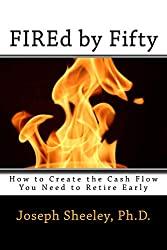Let’s say that you’re playing a game where you bet $10 on the toss of a coin. If it is a fair coin – equally weighted on both sides – you’ll guess right half of the time and wrong half of the time if you play for many runs, say 100 or more. Sometimes you might go on some streaks where you guess right five or even ten times in a row. Have one of these, and you may begin to think you can make money at this game. But you’ll also have streaks where you guess wrong several times in a row. You might chalk this up to “bad luck,” and return later to play some more to “get even,” or you may decide this is not the game for you. Over long periods of time, you’ll come out about even. If you are charged a small fee for each toss – say $1 per throw – you’ll slowly lose all of your money. This is how the house always wins at casino games like baccarat.
(Note, this site contains affiliate links. As an Amazon Associate I earn from qualifying purchases. When you click on an affiliate link and buy something, The Small Investor will get a small commission for the referral. You are charged nothing extra for the purchase. This helps keep The Small Investor going and free. I don’t recommend any products I do not fully support. If you would like to help but don’t see anything you need, feel free to visit Amazon through this link and buy whatever you wish. The Small Investor will get a small commission when you do, again at no cost to you.)

If you were to buy a single stock at the start of each day and then sell it at the end, you’d be in the same position. Even if you try to time your trades and limit your losses, as they do in day trading, you’ll find over long periods of time you’ll come out about even on your trades since your chances of buying a stock that goes up soon after is about the same as your chance of picking a stock that goes down soon after. You’ll be losing money, however, because you’ll be paying out money in trading fees. When you’re wrong and take a loss, you’ll still pay out fees. When your right, you’ll pay out fees and even pay out taxes if you come out ahead in a given year. Some people might hit a lucky streak on some days or even for a few weeks, but eventually the odds will catch up with them.

FIREd by Fifty: How to Create the Cash Flow You Need to Retire Early
But what if we change our coin game. What if you still lose $10 when you’re wrong, but you gain $20 when you’re right? You would still be wrong about half of the time, and you’d lose money when you were wrong. You might even have a losing streak and lose $30 or $40 fairly quickly. But if you kept playing, or alternatively, if you threw several coins at once, you would come out ahead because you would gain more when you were right than you would lose when you were wrong.
If you played a lot of times, it would be fairly easy to predict what your gains would be. If you just played five times, you could be up $100, but you could also be down $50. It is just the luck of the draw. If you played 100 times, however, you would probably be up between maybe $400 and $600. If you played a thousand times, you would probably be up between $4500 and $5500.
And this leads us to the next tactic given in Risk Allows You to Make Money in the Stock Market to deal with the risk associated with buying stocks:
2. You diversify your investments to reduce single-investment risk.
As stated in that post, stocks are priced such to justify the risk that you are taking. If they make the earnings that are predicted and pay out a dividend (or increase in price due to a predicted future dividend), it will provide a big enough return to justify the risk that you were taking. Because you’re taking more of a risk than you would be by putting your money in a bank account, you get a bigger reward – on the order of 12% per year on average (if invested for many years).
The issue is, however, that while the stock market may make those kinds of returns, there is nothing to say that you will make that kind of return no matter which stock you pick. You could buy stock in a company that makes bad business decisions, has corruption in the board, or simply is in a fading industry (think buggy whips). In that case your stock would just sit there or even decline in price.
(If you enjoy The Small Investor and want to support the cause, or you just want to learn how to become financially independent, please consider picking up a copy of my new book, FIREd by Fifty: How to Create the Cash Flow You Need to Retire Early This is the instruction manual on how to become financially independent.)

To deal with that risk, you do the same thing that you do with the coin game – you play a lot of times. If you buy a set of stocks, there will be a few that won’t work out (I’d say something like 1 in 20 of the stocks I buy collapses in price if I hold long enough), but the others will make up for the loss and then some. Just as you can make $20 when you’re right in the coin game and only lose $10 when you’re wrong, when you buy a stock the worst you can do is lose 100%, but you can make 200%, 500%, or even 1000% gains. You just need to buy enough different stocks to ensure you’ll have some gainers along with the losers.
One of the easiest ways to gain diversification is to buy mutual funds since they invest in many stocks at a time. You can just buy one fund and invest in 20, 50, or 100 companies or more. Buy funds that invest in different segments of the market, like a large cap fund and a small cap fund, and you diversify even more. This is really the only way to invest your retirement savings because you can’t afford to be wrong.
With other investing, such as your savings to become financially independent, you can choose to concentrate holdings and perhaps take on a little more risk in order to try to beat the markets. Here you’re trying to pick the next Microsoft or Home Depot that will provide huge gains over a number of years. Even in this case, however, you need to diversify out into more than just a few companies. Perhaps buy the best stock in five sectors to start, then diversify out into ten or twenty as your portfolio gets larger. That way if things happen that are beyond what you can predict from reading the yearly reports, you’ll have other positions to fall back on. As I always say, never have more in a single stock that you can afford to lose.
Have a burning investing question you’d like answered? Please send to [email protected] or leave in a comment.
Follow on Twitter to get news about new articles. @SmallIvy_SI
Disclaimer: This blog is not meant to give financial planning or tax advice. It gives general information on investment strategy, picking stocks, and generally managing money to build wealth. It is not a solicitation to buy or sell stocks or any security. Financial planning advice should be sought from a certified financial planner, which the author is not. Tax advice should be sought from a CPA. All investments involve risk and the reader as urged to consider risks carefully and seek the advice of experts if needed before investing.
